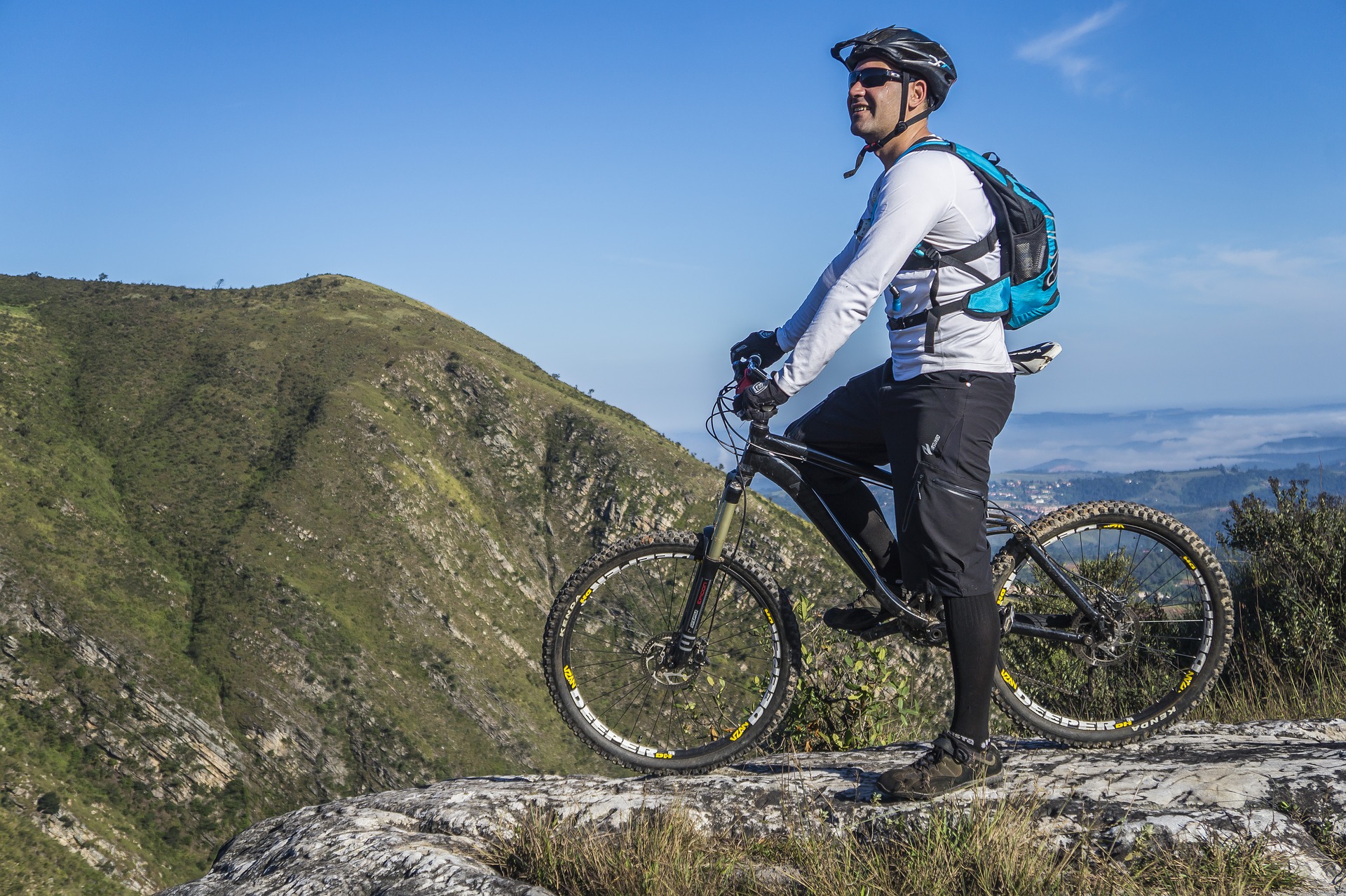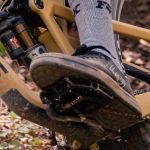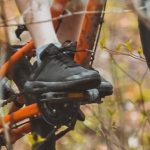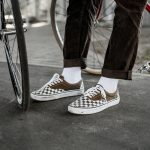One question new mountain bikers often ask is “Can I just wear sneakers?” After all, regular athletic shoes seem like they would work for riding trails. However, there are several key reasons dedicated mountain bike shoes make a better choice in most cases. Let’s explore some of the pros and cons of wearing sneakers when hitting the dirt.
Lack of Stiff Soles
One major drawback to wearing sneakers is their lack of stiff soles needed for efficient pedaling. Most running and athletic shoes have very flexible bottoms built for walking and running. This flex helps provide a smooth, natural stride. But when pedaling a bike, this flex works against power transfer wasting energy.
With each pedal stroke, sneaker soles bend and compress reducing force into the pedals. Over a ride, all those bent foot movements quickly add up to lost watts and wasted effort. Mountain bike shoes solve this using ultrastiff carbon fiber or plastic shanks. These components prevent any flex letting all your power go straight into the pedals. More power to the pedals equals more speed on the trails.
Poor Pedal Security
Another issue with sneakers comes from their smooth bottoms not grabbing pedals securely. Most flats and clipless pedals have protruding pins or ridges built into them. These features help lock shoes in place during rough sections. But sneaker soles easily slide around on top of pedals losing traction and control.
Riders in sneakers often find their feet bouncing off pedals when hitting bumps or jumps. The lack of grip also prevents properly weighted and heeled pedaling position. This can make tight corners and burly sections feel sketchier. Quality mountain bike shoes incorporate textured rubber tread patterns designed to Interface securely with various pedal systems. The result is optimal security and power transfer at all times.
Reduced Breathability
One other downside of sneakers comes in hot weather when feet can quickly overheat. Most athletic shoes use solid uppers with minimal ventilation designed for lighter activities. But mountain biking demands footwear able to handle high exertion and intense climbs that work up a big sweat.
Sneaker materials tend to trap all that heat and moisture inside leaving feet feeling hot and swampy. This can lead to blisters and discomfort on long rides. In contrast, good mountain bike shoes build in mesh panels and interior air channels. These venting features pull away perspiration while allowing fresh air to circulate around feet. Keeping feet cooler and dryer all ride enhances traction for better control when things get rowdy.
Less Protection Against Impacts
Another drawback involves the lack of protection most sneakers provide against pedal and trail impacts. Athletic shoes usually just have thin rubber soles with minimal cushioning designed for smoother surfaces. Meanwhile, the mountain bike world dishes out a steady barrage of hits and vibration as riders plow down rocky trails.
Over time, repeated pedal strikes and harsh landings take a toll causing foot pain and overuse issues. Many quality mountain bike shoes incorporate reinforced toe caps to block strikes when dabbing feet. They also use multi-density foams and rubbers to absorb shocks from drops and big hits. The extra cushioning and protection keeps feet happier allowing longer days enjoying the flow.
Not Great for Hiking
Finally, sneakers also fall short when having to hike sections of trail between the goods. Their slick bottoms struggle for grip on muddy or loose terrain. And uppers often lack the extra ankle support helpful for rocky ascents or sidehills. Caging lace systems can pinch feet when volume changes on hikes too.
Meanwhile, burlier mountain bike shoes incorporate extra tread patterns and sticky compounds. These provide exceptional grip on slippery or uneven ground giving more confidence on foot. They also include mid to high ankle protection while efficiently lacing for secure, comfortable fit across a broader range of movement. Not having to baby your footwear while hiking allows you to charge harder when back on the bike.
When Sneakers Could Work
Despite these drawbacks, there are a few scenarios where sneakers may provide an okay option for riding. For more casual, mellow trail sessions, sneakers could get the job done just fine. Or they might work for shorter rides under an hour or two in dry conditions. Young groms, beginners or riders on a tight budget could potentially start with some sneakers to see if they enjoy the sport first before investing in dedicated kicks.
However, any riders anticipating riding aggressive trails or bike parks should definitely opt for proper mountain bike shoes. Tackling rough terrain in sneakers quickly leads to lost traction, soaked or battered feet, and diminished control. Compromised footwear heavily impacts mountain biking performance and safety. So sneakers only make a decent choice for riders sticking to gentler trails or just putting in shorter, lower intensity sessions.
Consider Flat Pedal Shoes
For riders decidedly going the flat pedal route, another option exists between sketchy sneakers and spendy clipless kicks. Many companies make flat pedal specific shoes designed for the demands of mountain biking. These budget-friendly shoes incorporate many hallmark features of premium shoes, but skipping the cleats for pure hiking-style soles.
Flat shoes use similar stiff midsoles as clipless pairs for strong pedal power transfer. Their sticky rubber soles grab flats securely for control. And the burly uppers with added ankle protection handle technical hike-a-bike sections. Many models also include reinforced toe rands and underfoot cushioning too.
By prioritizing the needs of flat pedal riders, these shoes outperform sneakers for a lot less cost than premium clipless models. They make a nice “Goldilocks” option for casual riders, gravity fans, and those on a budget. The additional grip, pedal feel, and burlier protection often make flat pedal shoes a worthwhile upgrade over flimsy old sneakers.
Five Ten Makes Quality Flats
Of the flat pedal focused shoe offerings, the models from Five Ten stand out most. This brand pioneered the sticky rubber soles coveted by mountain bikers and rock climbers. Their proprietary Stealth rubber formulas achieve the firmest pedal grip around without feeling overly rigid or heavy. Five Ten shoes transmit excellent pedal feel while still damp out chatter and vibration underfoot.
Some of their most popular kicks include the Freerider, Freerider Pro, Freerider EPS and Trailcross lines. These incorporate mid- to high-top construction with reinforced toecaps and durable uppers built for hike-a-bike abuse. Different sticky rubber lug patterns optimize grip and wearability depending on whether you prioritize pedal feel or scrambling performance. But all the options promise superior flat pedal pedal control compared to hiking or skate shoes.
Ultimate Footwear Still Clipless
While quality flat pedal shoes absolutely have their place, most experienced riders say dedicated clipless mountain bike shoes prove the ultimate footwear option for maximum performance. By locking onto clipless pedals, riders achieve the most efficient power transfer possible. Feet remain firmly in place for optimum pedaling position and weight distribution too.
That firm connection to the pedals allows putting way more force and control into turns, jumps and pumping movements. Experienced riders can modulate pedal pressure for enhanced techniques like manuals, bunny hops and wheels. Quality clipless shoes enhance every aspect of aggressive mountain biking in ways unmatched by sneakers or flat pedal setups.
If you’re serious about progressing at mountain biking and unlocking its full potential, make the move to clipless-compatible mountain bike shoes as soon as feels comfortable. Though an investment up front, their performance gains justify the cost over time for dedicated riders tackling demanding trails.
In Summary
While sneakers may get the job done for some ultra-casual riding, they remain a poor choice overall for mountain biking compared to dedicated footwear. Athletic shoes simply lack the stiffness, grip, protection and breathability needed for progressing and enjoying the sport. Flat shoes provide a solid budget option over sneakers. But premium clipless mountain bike shoes prove the ultimate investment for performance and pleasure when riding hard.






